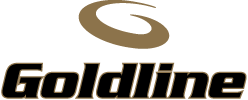Today, World Curling released Updates to the Specification for Brushing Devices. In this release they addressed fundamental problems with both the underlying specification, and with their certification process.
PLEASE NOTE: with this recent update, you are not required to discard previously approved Goldline Impact foam. The Goldline product addressed in World Curling’s article remains approved for future use into next season.
What happened?
- There was a component of the specification, the modulus, which was not a good indicator of foam performance, or characteristics such as hardness. World Curling has opted to drop this element from the specification, effective immediately.
- Since the original introduction of the Specifications for Brushing Devices, there have been fundamental problems with World Curling’s test facilities. The first facility did not provide robust data, so detailed test results are not available for anything tested at that facility. The second test facility was not performing accurate testing, and mistakenly provided approvals for products that should have been deemed out of scope. Then that facility suddenly closed.
As a result, it was recently brought to our attention that the Goldline Impact foam and high-performance products from other suppliers have been found to be out of scope of the original specification. This happened despite the fact that Goldline worked with World Curling and their selected test facility to ensure that our foam was in scope and received certification.
How was the Impact foam out of scope?
The original specification indicated that the modulus reading should be between 2.0 and 4.0. The Impact foam averaged at 5.855.
The Impact foam is compliant with all other elements of the World Curling specifications.
What does this mean?
This won’t change anything about availability or certification of the current Impact foam. World Curling has decided that the modulus reading was not relevant to on-ice performance and was not indicative of any relevant characteristics of foam, such as hardness. For example, the Impact foam has a higher modulus than some foams which are much harder foams, and some which are much softer. Modulus does not have a direct correlation to foam hardness.
Based on this new information, World Curling is dropping the modulus from their specification, and Impact foams retain their certification.
Additionally, since the Impact foam was certified by World Curling in good faith, and there is no indication that the modulus had influence on performance, all existing results from previous competitions using certified products will remain the same. Teams, manufacturers, and World Curling all acted in good faith, with the failure coming directly from the testing facility. There is no indication of any performance benefit due to the out-of-scope modulus.
Additional changes
World Curling has introduced a new element to their specification. In technical terms, the change is that a foam must compress to between 65% and 86% of its original thickness when 779N of force is applied.
Meaning, when approximately 175 lbs of force is put on the foam, there is a set range that is acceptable for how much it compresses. In other words, there are now specific limits on how hard or how soft an approved foam can be. All certified Goldline products, including Impact, Air Pro, Air Pro X, and Oval Pro will retain their certification.

Leave A Comment